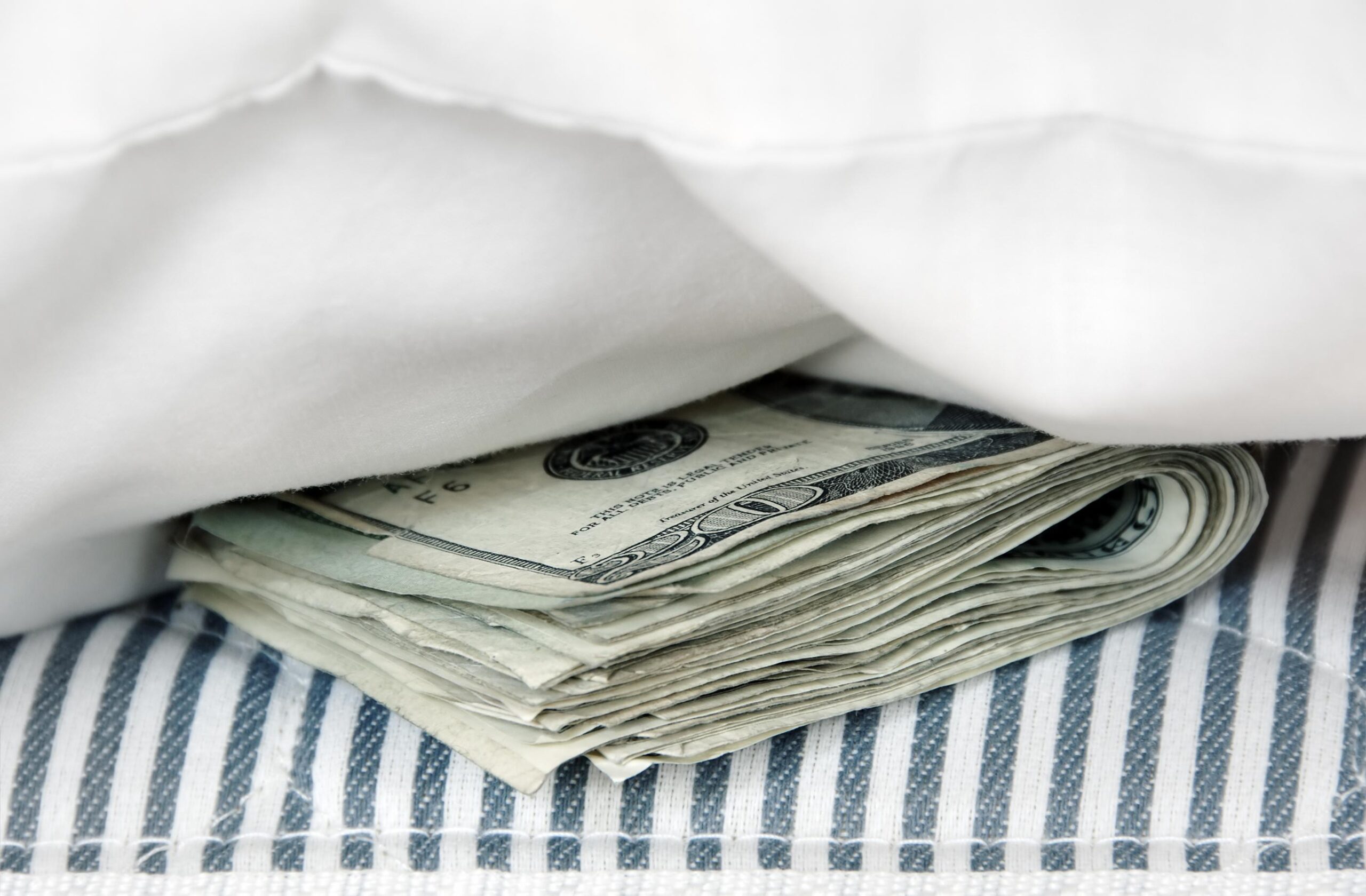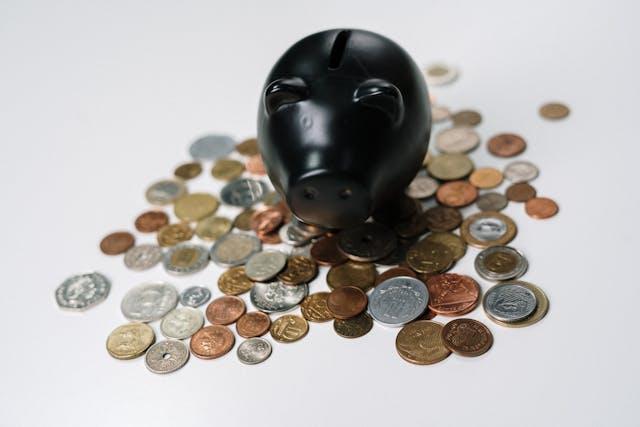Still a Thing: People Who Hide Money Under the Mattress

In a time when savings accounts once offered virtually no interest earned, people are still wary of anything but the safest stock options. Even CDs provide a dismal return unless you promise to lock away your investment for a lifetime. Is it any wonder why some savers go old school? They hide money in a secret spot in their homes.
Going to the Mattresses
During the Great Depression (and for centuries prior), hiding money under mattresses, in sock drawers, or in other hiding places around the house was perfectly normal. After all, before FDIC security was in place, if a bank went under, your cash went with it!
Fortunately, your money is now reasonably safe if it’s kept in a bank account. Credit cards and debit cards are pretty reliable in general. However, many Americans are reverting back to more traditional methods to keep money safe. This is happening even, as confirmed by increased holiday spending, the FDIC reports that people do trust banks more.
But what about those households that are fed up with financial institutions in the first place? According to CBS News, More than 28 million people in the U.S. forgo traditional financial institutions. “Often this is because of mistrust, cultural and language barriers or a belief that by the time all the bills are paid, there will be nothing left for an account.”
Why We Hide Money at Home— and Why It Works
It’s not unusual to distrust financial institutions, even after the Great Recession many years ago. Many baby boomers lost their entire retirement savings, forcing them back to work, for good in many cases.
According to the AARP’s Public Policy Institute Report, “The Great Recession drove millions of older Americans to deplete savings accounts, put off medical or dental treatment and reduce their retirement expectations.” No wonder many of them pulled their savings/checking accounts and made their own nest egg right at home.
There’s definitely an upside to having emergency money at the ready, as long as it’s stored safely. Obviously, hoarding a few hundreds under the bed isn’t secure since bedrooms are the first stop for savvy burglars and thieves. However, a fireproof safe that’s unbreakable and bolted into place (as well as hidden) is a good place to hide cash. If “home savings” is done well, it can be relatively safe. Just don’t put your entire nest egg in your humble abode or make it the cornerstone of your personal finance plans. Unfortunately, the vast majority of “mattress stuffers” don’t spring for the most effective protection.
The Downside to What’s Under the Bed
There are many threats to hiding away money at home that don’t exist in financial institutions. Break-ins, fires, natural disasters and even forgetting where you put hidden cash, are more common than you think. The cost of a fireproof safe and the price of installing it properly is enough to turn off many homeowners. They think they’re “saving” by hiding cash in Ziploc bags around the home (even buried in the yard), but there are many cases of new homeowners discovering treasure troves old tenants forgot.
Overall, it’s still a bad idea at the end of the day.
Hiding money at home will always be “a thing,” especially for older Americans. Even millennials may take up the practice as we face financial turbulence in the years ahead.
Those with barriers to traditional banking, or anyone who’s been burned financially may keep a lot of cash at home. If a financial institution just isn’t an option, play it smart and invest in security at home just in case. Anything less and you’re gambling on your financial future.



